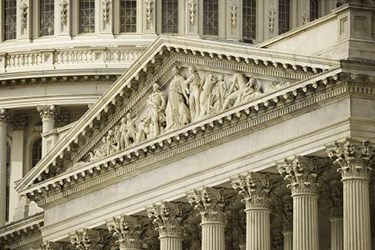The Current State Of U.S. Biosimilar Policies — An Overview

With the continued policy dialogue on how rising drug costs impact patient access, the theoretical cost savings that biosimilar medications may offer is intriguing to many policymakers as well as those in the industry. A recent IMS Institute Report found several interesting points regarding the potential of biosimilars:
- By 2020, biosimilars will start competing with original biologics that currently have sales of $50 billion annually.
- Biosimilar use in the European Union and United States may yield total savings of $56 to $110 billion over the next five years.
- Within three years, eight major biologic medicines are expected to lose exclusivity protection, including treatments for autoimmune disorders and diabetes.
- Healthcare systems, by opening markets to biosimilar competition, could realize a 30 percent reduction in price per treatment day compared with originator biologics.1
As the conversation about biosimilars and their potential cost savings continues, let’s examine what the U.S. Department of Health and Human Services (HHS), the Food and Drug Administration (FDA), and Congress have been doing recently to chart the developing course of biosimilar policies.
Trump Administration Takes Steps To Encourage Biosimilar Uptake
This spring, the administration released its blueprint to lower drug prices, “American Patients First,” which featured a discussion of greater biosimilar utilization. The blueprint called for key reforms in four areas: (1) improved competition, (2) better negotiation, (3) lower list prices, and (4) reduced out-of-pocket costs.
Unfortunately, we have yet to see any legislation out of the blueprint, but this could be due to where we are on the legislative calendar. Normally, toward the end of the year in a non-presidential election year, legislative activity tends to slow down, with only the most politically important issues maintaining momentum. Regardless of who wins control of Congress this fall, we could see much more biosimilar legislation driven by the blueprint, as well as the FDA, which continues to push for a cheaper prescription drug marketplace. This should be easier in 2019, as we will be more removed from election-driven politics.
Notwithstanding this, the blueprint described some actions that the Secretary of Health and Human Services can take to accomplish greater biosimilar utilization. According to the blueprint, thus far the administration has:
- Finalized “a policy in which each biosimilar for a given biologic gets its own billing and payment code under Medicare Part B, to incentivize development of additional lower-cost biosimilars. Prior approaches to biosimilar coding and payment would have created a race to the bottom of biosimilar pricing, while leaving the branded product untouched, making it an unviable market that few would want to enter.”
- Finalized “changes to the Medicare Prescription Drug Program in the 2019 Part C and Part D regulation,” allowing Medicare beneficiaries receiving low-income subsidies to access biosimilars at a lower cost.
The blueprint also alerted us to actions HHS may take as it continues to solicit comments on other policies it has under active consideration. One point to note is the difference between this administration and the last. The current administration has had its agencies rely more on requests for information rather than opting for the formalities within the regulatory process of proposing a rule.
A request for information is a tool used by agencies to solicit comments from interested stakeholders to provide the agency with the necessary technical aspects of complex topics. This allows agencies to determine if a formal rulemaking process will be promulgated on certain commonly commented on points. In this case, the comment period for the request for information ended in July 2018, with HHS currently reviewing the comments received. There is no anticipated date for next steps, so the public will have to wait until the next stage before discovering what the major points of interest are from the industry.
Specifically, HHS is seeking clarity from the industry on the following issues:
- Promoting innovation and competition for biologics. The FDA will issue new policies to improve the availability, competitiveness, and adoption of biosimilars as affordable alternatives to branded biologics. The FDA will also continue to educate clinicians, patients, and payers about biosimilar and interchangeable products as it seeks to increase awareness about these important new treatments.
- Samples for biosimilars and interchangeables. What actions should be considered to facilitate access to reference product samples by these companies?
- Resources and tools from the FDA: What specific types of information resources or development tools would be most effective in reducing the development costs for biosimilar and interchangeable products?
- Improving the Purple Book. What additional information could be added to increase the utility of the Purple Book?
- Educating providers and patients. What types of information and educational resources on biosimilar and interchangeable products would be most useful to healthcare professionals and patients to promote understanding of these products? What role could state pharmacy practice acts play in advancing the utilization of biosimilar products?
- Interchangeability. How could the interchangeability of biosimilars be improved, and what effects would it have on the prescribing, dispensing, and coverage of biosimilar and interchangeable products?
While all of these topics are important, in my opinion solid policies on interchangeability, biosimilar education, and formulary coverage would serve industry the best. First, having the clarity on whether interchangeability is feasible and what those points are will likely determine the speed at which we will see more biosimilars introduced into the marketplace. Second, educating physicians, pharmacists, and patients about the benefits of biological products will go a long way in ensuring marketplace comfort with these new protein-based medications. Last, understanding how payers and pharmacy benefit managers will manage these products is key in determining whether biosimilars will have an immediate impact on costs. Will payers and PBMs place these medications on higher tiers? How will rebates effect biosimilar utilization? Knowing this will help industry stakeholders determine their relevant pricing strategies to stay ahead of this emerging market.
Thus far, the FDA has been vocal about increasing biosimilar utilization as well. This summer witnessed FDA Commissioner Gottlieb release his Biosimilar Action Plan that addressed four key areas:
- Improving the efficiency of the biosimilar and interchangeable product development and approval process
- Maximizing scientific and regulatory clarity for the biosimilar product development community
- Developing effective communications to improve understanding of biosimilars among patients, providers, and payers
- Supporting market competition by reducing gaming of FDA requirements or other attempts to unfairly delay market competition to follow-on products
Additionally, the industry is closely watching the FDA’s direction for interchangeability, an important policy topic to address for market clarity, as it discusses how a biosimilar can be substituted for the brand biologic. Currently, there are still no interchangeable biosimilars, as the FDA continues to consider how to determine what biosimilar can be interchangeable with a particular biologic. At this point in time, it remains unclear when the industry will receive an answer on this.
Congressional Proposals On Biosimilars
So, what is Congress doing to address biosimilars? Congress has a few bills directly on point (listed below); however, it is questionable whether any of these will move due to the lateness of the legislative calendar.
- H.R. 6478, The Biosimilars Competition Act of 2018, seeks to enhance competition for prescription drugs by increasing the ability of the Department of Justice and the Federal Trade Commission (FTC) to enforce existing antitrust laws regarding biologic and biosimilar products. The act as proposed would essentially require biologic and biosimilar manufacturers to report “pay for delay” agreements, which are deals between biologic and biosimilar companies that ensure lower-cost medications are kept off the market for a certain time period. These deals, which have been frowned upon by the FTC and Congress, allow innovator companies to pay generic, or in this case biosimilar, companies not to bring cheaper alternatives to the market for a specified time. The federal government has been aggressively attacking these agreements as harmful to patient access to cheaper alternatives.
- S. 974/H.R. 2212, The Creating and Restoring Equal Access to Equivalent Samples Act of 2018, seeks to promote competition in the market for drugs and biological products by facilitating the timely entry of lower-cost generic and biosimilar versions of those drugs and biological products. This is another example of Congress going after pay for delay agreements to make more affordable drugs accessible to patients, assuming that biosimilar prices are proven to be consistently lower the biologics.
- H.R. 2051, FAST Generics Act of 2017, seeks to amend the Federal Food, Drug, and Cosmetic Act to ensure that eligible product developers have competitive access to approved drugs and licensed biological products, so as to enable eligible product developers to develop and test new products, and for other purposes. This bill is along the same theme as the aforementioned, as this bill echoes the attempt to provide patients access to lower-priced medications.
At this point, it seems that the Creating and Restoring Equal Access to Equivalent Samples Act of 2018 has the best chance of passing before the end of 2018, as it has been receiving the most favorable attention on Capitol Hill for quite some time. As mentioned above, however, the upcoming midterm elections make this highly unlikely.
It is very likely that we will see legislation addressing greater biosimilar utilization — either in the form of reintroduction of this session’s bills or entirely new bills — next year, regardless of who controls the House and Senate. However, with the uncertainty surrounding the midterms, it is difficult to predict which bills will emerge as “winners” next year. I also do not foresee any biosimilar policy development slowdown from either HHS Secretary Azar or FDA Commissioner Gottlieb, as greater biosimilar utilization remains a priority for them as a means to achieve lower prescription drug prices.
References:
- IMS Health: Surge in Biosimilars to Drive Significant Change in Health System Costs, Patient Access and Competition by 2020, March 2016. http://www.imshealth.com/en/about-us/news/ims-health-surge-in-biosimilars-to-drive-change-in-health-system-costs
About The Author:
 Ronald W. Lanton III, Esq., has over 25 years of experience in government affairs at the municipal, state, and federal government levels, with 15 years dedicated to the healthcare sector. He is currently the executive director and head lobbyist at Frier Levitt Government Affairs, LLC and senior counsel at Frier Levitt. He frequently consults Wall Street firms on financial issues related to the healthcare sector.
Ronald W. Lanton III, Esq., has over 25 years of experience in government affairs at the municipal, state, and federal government levels, with 15 years dedicated to the healthcare sector. He is currently the executive director and head lobbyist at Frier Levitt Government Affairs, LLC and senior counsel at Frier Levitt. He frequently consults Wall Street firms on financial issues related to the healthcare sector.
Lanton is a featured industry speaker on issues such as pharmaceutical safety and healthcare cost containment, and he has authored numerous articles regarding pharmacy and healthcare law. He earned a B.A. from Miami University and a J.D. from The Ohio State University. He is also the chair of the Biologics Committee for the New York Bar Association.
